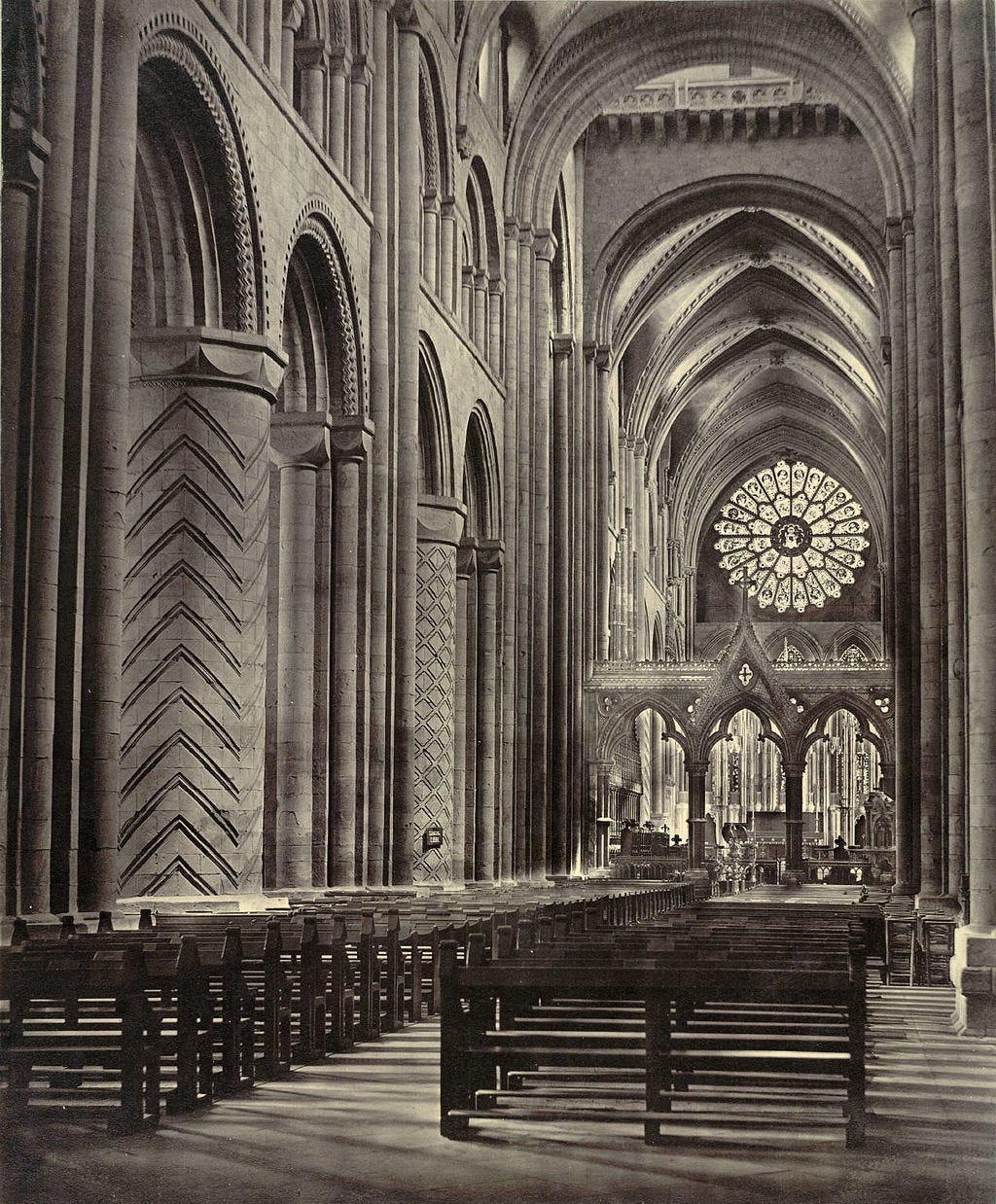On Gothic Architecture
...
The “heavy and grim” Romanesque churches of the 11th century were expressive of “strength and power,” and conveyed the “Church Militant,” offering shelter against an onslaught of evil. Romanesque was thus defined by what it kept out. The next stage in the history of architecture, the more famous Gothic—what then characterized its aesthetic? Its elements, taken one by one, were developments of Romanesque elements. But taken as a whole, Gothic was anti-Romanesque. It was defined by what it let in.
The key word is light, in many senses. Gone are the thick stone columns. In their place rise delicate networks of pillars, shooting up like young trees and intertwining across the vaulted ceiling: “the whole interior seems to be woven out of thin,” even “frail,” “shafts and ribs.”
A ceiling held up by such materials seems weightless. Buttressing this appearance, the walls are no longer made of dark stone, but are filled with sun-beamed stained-glass windows. Gothic is a transparent, diaphanous architecture (Otto von Simpson).
The “vast interiors” of Gothic cathedrals “seem to dwarf anything that is merely human and petty.” But theirs is not the sublime of an awesome storm or a threatening mountain. In their elimination of “everything that was heavy, earthly or humdrum,” Gothic cathedrals seem to proclaim the glories of heaven. (Gombrich, The Story of Art.)
Were these aesthetic innovations inevitable, once the necessary technology and engineering expertise were developed? Surely not. Then what was it about the Church, or the world around it, that made churches of this kind desirable?




